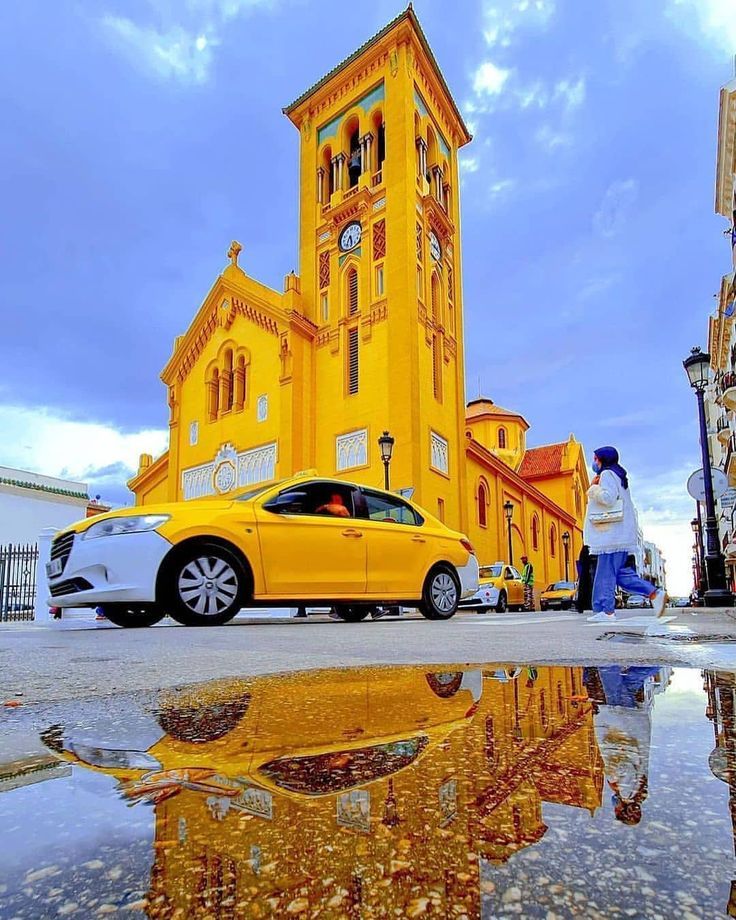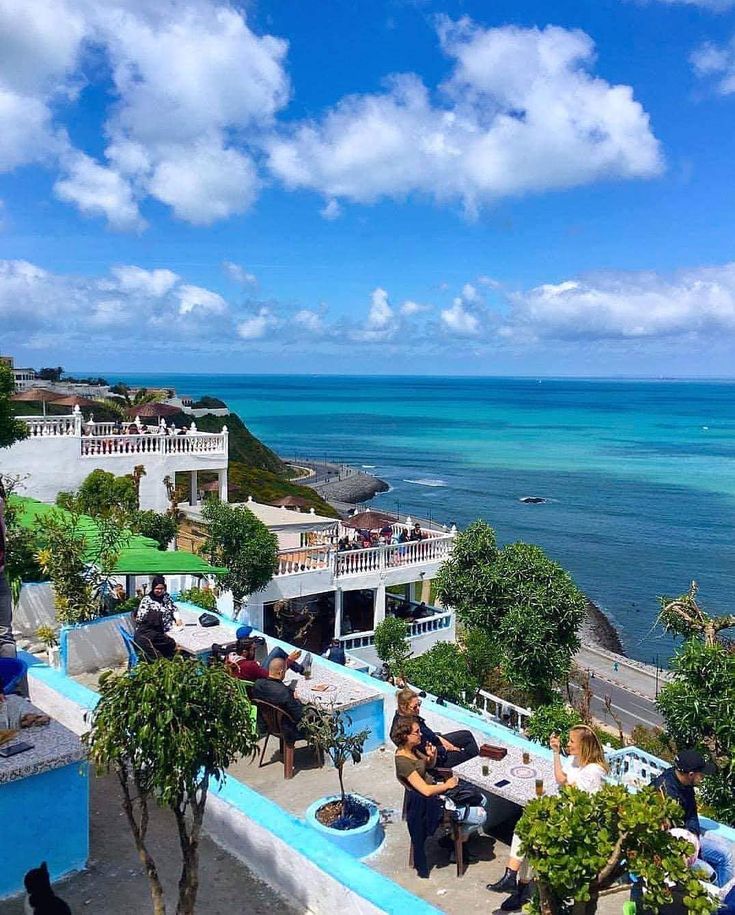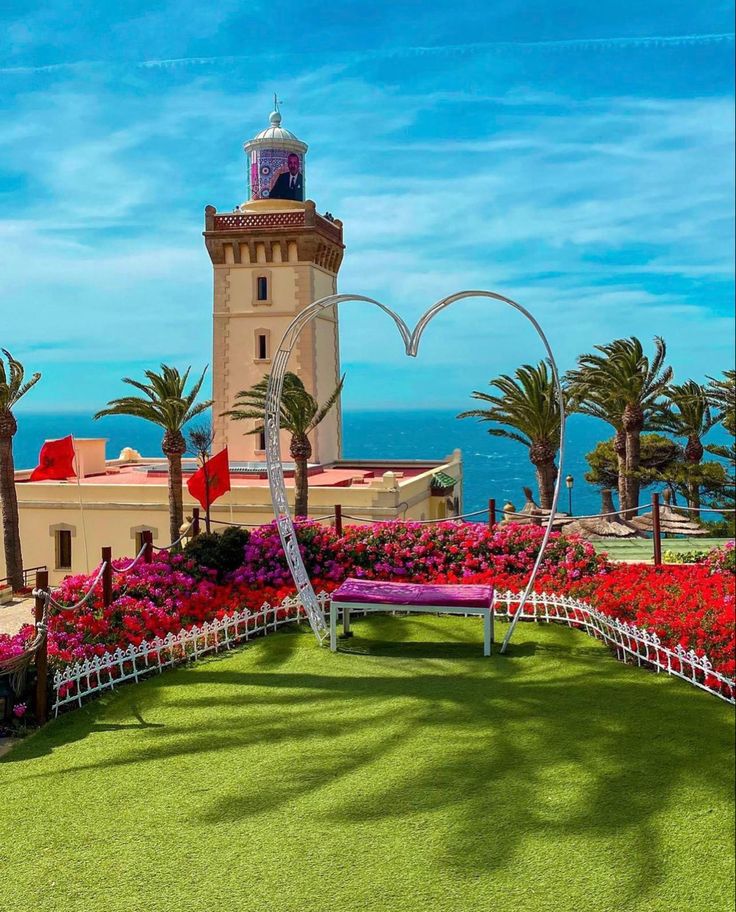
Tetouan
Tetouan: The White Dove of Morocco
Nestled at the foot of the Rif Mountains and just a short distance from the Mediterranean Sea, Tetouan is a city of remarkable charm and cultural depth. Known as the “White Dove” for its whitewashed buildings and peaceful atmosphere, this northern Moroccan gem offers a perfect blend of Andalusian, Arab, and Berber influences. Recognized as a UNESCO World Heritage Site, Tetouan’s medina is one of the best-preserved in Morocco, and the city’s artistic spirit, rich history, and stunning natural surroundings make it a destination worth exploring.
In this blog, we’ll guide you through Tetouan’s highlights, including its historical landmarks, vibrant arts scene, culinary delights, and hidden treasures.
1. A Brief History of Tetouan
Tetouan’s history is as diverse as its culture. Originally a Phoenician settlement, the city gained prominence during the Roman Empire. However, it was during the Andalusian era that Tetouan flourished, becoming a haven for Muslim and Jewish refugees fleeing Spain after the Reconquista in the 15th century. These exiles brought with them Andalusian architectural styles, craftsmanship, and a unique cultural identity that remains evident today.
During the 20th century, Tetouan served as the capital of the Spanish protectorate in northern Morocco, further enriching its multicultural legacy. Today, Tetouan is a vibrant city that seamlessly blends its historical heritage with modern life.
2. Exploring Tetouan’s Medina
The heart of Tetouan is its medina, a UNESCO-listed site celebrated for its authenticity and preservation. Unlike the bustling medinas of Marrakesh or Fez, Tetouan’s medina offers a quieter, more intimate experience.
Highlights of the Medina
- Andalusian Architecture: Wander through narrow streets lined with whitewashed buildings adorned with green-tiled roofs, intricate wooden doors, and wrought-iron balconies. The Andalusian influence is evident in every detail.
- Souks (Markets): The medina’s souks are a treasure trove of handcrafted goods. From finely woven rugs to hand-painted ceramics and traditional Berber jewelry, the craftsmanship here is unparalleled. The Souk El Hots is particularly famous for textiles and embroidery.
- The Mellah: Explore the old Jewish quarter, where remnants of a once-thriving community include synagogues and traditional houses with unique architectural features.
Walking through Tetouan’s medina feels like stepping back in time. Each turn reveals new surprises, whether it’s a hidden courtyard, a bustling market, or a quiet corner perfect for reflection.
3. Must-Visit Landmarks in Tetouan
Royal Palace (Dar Al Makhzen)
Located at the entrance of the medina, the Royal Palace is a stunning example of Moroccan architecture. While not open to the public, its grand facade and the surrounding square, Plaza Hassan II, are worth a visit. The square serves as a vibrant gathering place for locals and visitors alike.
Ethnographic Museum (Dar Sanaa)
This museum provides a fascinating glimpse into Tetouan’s cultural heritage. Housed in a traditional Moroccan building, it showcases artifacts such as traditional clothing, jewelry, and musical instruments. It’s an excellent way to learn about the customs and traditions of the region.
Archaeological Museum
For history buffs, the Archaeological Museum offers a journey through Tetouan’s ancient past. Highlights include Roman mosaics, Phoenician artifacts, and Islamic manuscripts. The museum’s garden, filled with Mediterranean plants, provides a peaceful escape.
Hammams (Traditional Bathhouses)
Experience Moroccan wellness culture at one of Tetouan’s traditional hammams. These bathhouses offer an authentic way to relax and rejuvenate while immersing yourself in local traditions.
4. Art and Culture in Tetouan
Tetouan is often referred to as the “City of Art,” and for good reason. The city has long been a hub for artists and intellectuals, and its artistic spirit is evident in its galleries, workshops, and cultural institutions.
Tetouan School of Fine Arts
Founded in 1945, this prestigious institution has nurtured generations of Moroccan artists. Visitors can explore exhibitions of contemporary art and see the creative process in action.
National Institute of Traditional Arts
This institute is dedicated to preserving traditional Moroccan craftsmanship. Watch artisans at work as they create intricate designs in wood, metal, leather, and textiles. It’s a unique opportunity to appreciate the skill and dedication behind Morocco’s artisanal heritage.
Tetouan International Mediterranean Film Festival
Held annually, this festival celebrates the best of Mediterranean cinema and attracts filmmakers and cinephiles from around the world. If you visit during the festival, it’s an excellent chance to experience Tetouan’s cultural vibrancy.
5. Culinary Delights of Tetouan
Tetouan’s cuisine reflects its diverse cultural influences, offering a delightful mix of Andalusian, Moroccan, and Mediterranean flavors. Here are some must-try dishes:
- Pastilla: A savory-sweet pie made with layers of flaky pastry, shredded chicken or pigeon, almonds, and cinnamon. This dish is a nod to Tetouan’s Andalusian heritage.
- Harira: A hearty soup made with tomatoes, lentils, chickpeas, and spices, often enjoyed during Ramadan.
- Fish and Seafood: Given Tetouan’s proximity to the Mediterranean, fresh fish and seafood are central to its cuisine. Try grilled sardines, calamari, or a seafood tagine.
- Mint Tea: No meal in Tetouan is complete without a cup of mint tea, often accompanied by traditional Moroccan pastries like ghoriba or chebakia.
For a memorable dining experience, visit local restaurants such as Blanco Riad or El Reducto, where you can savor authentic dishes in beautifully restored Andalusian-style settings.
6. Exploring Beyond Tetouan
Tetouan’s location makes it an excellent base for exploring northern Morocco. Here are some nearby destinations worth visiting:
- Martil: A charming seaside town just 10 kilometers from Tetouan. Its sandy beaches and relaxed vibe make it a popular spot for sunbathing and swimming.
- Cabo Negro: Known for its pristine beaches and upscale resorts, Cabo Negro is perfect for a day of luxury and leisure.
- Chefchaouen: The famous “Blue Pearl” of Morocco is only an hour’s drive from Tetouan. Its blue-painted streets and mountain scenery are a must-see.
- Tangier: A cosmopolitan city with a rich history and vibrant cultural scene, Tangier is just an hour away by car or train.
7. Tips for Visiting Tetouan
- Best Time to Visit: Spring (March to May) and autumn (September to November) offer pleasant weather for exploring the city and its surroundings.
- Getting Around: Tetouan is a walkable city, but petit taxis are readily available for longer distances.
- Language: Arabic and Berber are the official languages, but Spanish and French are widely spoken due to Tetouan’s historical ties.
- Currency: The Moroccan dirham (MAD) is the local currency. Credit cards are accepted in larger establishments, but carry cash for markets and small vendors.
8. The Unique Charm of Tetouan
What sets Tetouan apart is its authenticity. Unlike Morocco’s more tourist-heavy cities, Tetouan offers a genuine glimpse into Moroccan life. Its medina feels lived-in and vibrant, its people are warm and welcoming, and its artistic soul shines in every corner.
Conclusion
Tetouan is a city of contrasts—a place where history meets modernity, and tradition blends seamlessly with innovation. Whether you’re exploring its medina, admiring its Andalusian architecture, or simply enjoying the tranquility of its surroundings, Tetouan offers an experience that is both enriching and unforgettable. So pack your bags and discover the White Dove of Morocco—a destination that will capture your heart and leave you longing to return.
Recent Posts
Chefchaouen
Tanger
Tetouan
All Categories

Morocco




